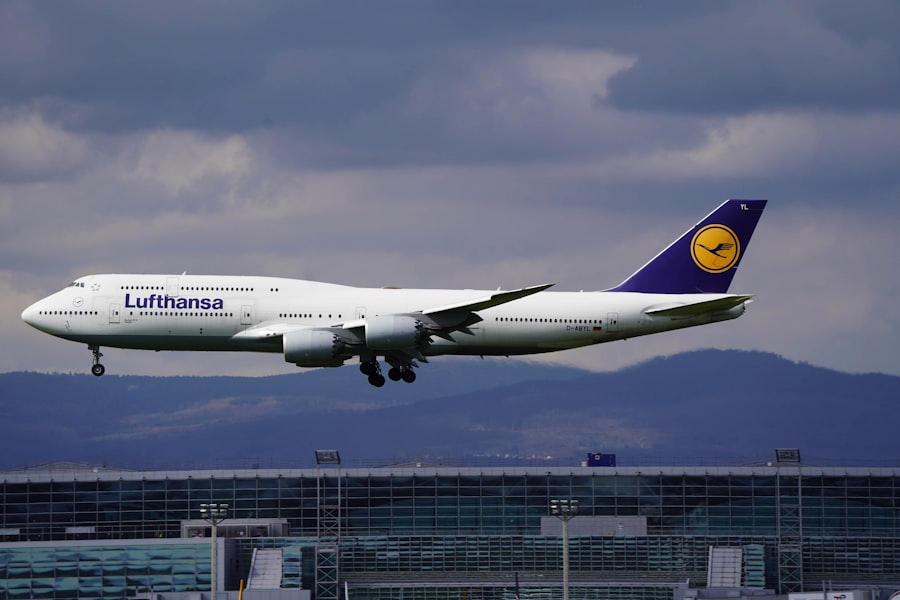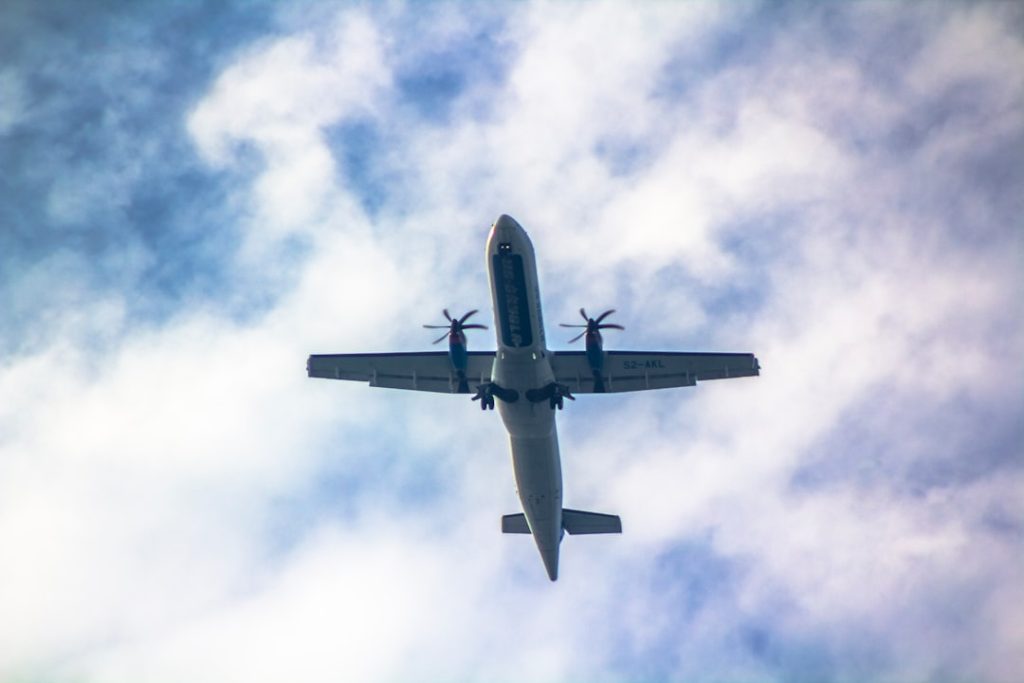The history of airlines in the United States is a fascinating journey that reflects the broader evolution of transportation and technology. The roots of commercial aviation can be traced back to the early 20th century, with the first scheduled air service commencing in 1914. This inaugural flight, operated by the St.
Petersburg-Tampa Airboat Line, was a short hop across Tampa Bay, Florida, and marked the beginning of a new era in travel. However, it wasn’t until after World War I that the airline industry began to take shape more significantly. The war had accelerated advancements in aviation technology, and many pilots returned home with a newfound passion for flying.
In the 1920s and 1930s, the U.S. government began to recognize the potential of air travel, leading to the establishment of the Air Mail Act of 1925. This legislation allowed private companies to bid for contracts to carry mail, which in turn spurred the growth of commercial airlines.
Companies like Transcontinental Air Transport (TAT) and Eastern Air Lines emerged during this period, laying the groundwork for what would become a robust airline industry. The introduction of larger aircraft and improved navigation systems further facilitated the expansion of air travel, making it more accessible to the general public.
Key Takeaways
- US airlines have a rich history dating back to the early 20th century, with the first commercial flight taking place in 1914.
- Deregulation in the late 1970s had a significant impact on US airlines, leading to increased competition and lower fares for consumers.
- Major players in the US airline industry include legacy carriers like American, Delta, and United, as well as low-cost carriers like Southwest and JetBlue.
- The evolution of technology in US airlines has led to advancements in aircraft design, navigation systems, and passenger amenities.
- US airlines face challenges such as fluctuating fuel prices, labor disputes, and the impact of natural disasters and global events on travel demand.
- The future of US airlines is likely to be shaped by continued technological advancements, changing consumer preferences, and environmental concerns.
- The environmental impact of US airlines is a growing concern, with efforts being made to reduce carbon emissions and invest in sustainable aviation fuel.
- The customer experience in US airlines is influenced by factors such as ticket pricing, in-flight amenities, and customer service, with a focus on improving satisfaction and loyalty.
The Impact of Deregulation on US Airlines
The airline industry underwent a seismic shift with the Airline Deregulation Act of 1978, which fundamentally changed how airlines operated in the United States. Prior to deregulation, the Civil Aeronautics Board (CAB) tightly controlled routes, fares, and market entry for airlines. This regulatory environment often stifled competition and innovation, leading to higher prices and limited choices for consumers.
The deregulation movement aimed to foster competition by removing these restrictions, allowing airlines to set their own fares and determine their own routes. The immediate aftermath of deregulation saw a surge in new entrants into the market, as numerous low-cost carriers emerged to challenge established airlines. This influx of competition led to a significant decrease in airfares, making flying more affordable for millions of Americans.
However, deregulation also brought challenges; many legacy carriers struggled to adapt to the new competitive landscape, leading to a wave of bankruptcies and consolidations throughout the 1980s and 1990s. The industry saw major players like American Airlines and United Airlines merge with smaller carriers to maintain viability, reshaping the competitive dynamics of air travel in the U.S.
The Major Players in the US Airline Industry

Today, the U.S. airline industry is dominated by a handful of major carriers that have established themselves as key players in both domestic and international markets. American Airlines, Delta Air Lines, and United Airlines are often referred to as the “Big Three,” controlling a significant share of passenger traffic and revenue.
These airlines have extensive route networks that connect cities across the globe, offering travelers a wide range of options for their journeys. In addition to these legacy carriers, low-cost airlines such as Southwest Airlines and JetBlue Airways have carved out substantial market niches by providing affordable fares and no-frills service. Southwest Airlines, known for its unique boarding process and lack of assigned seating, has become synonymous with budget travel in the U.S.
JetBlue has differentiated itself by offering amenities like free Wi-Fi and more legroom than traditional low-cost carriers. The competition between these major players has led to innovations in pricing strategies, customer service initiatives, and loyalty programs designed to attract and retain passengers.
The Evolution of Technology in US Airlines
| Year | Number of Airlines | Passenger Miles Flown (in billions) | Number of Aircrafts |
|---|---|---|---|
| 2000 | 10 | 587 | 6,800 |
| 2010 | 9 | 684 | 7,200 |
| 2020 | 7 | 543 | 6,500 |
The evolution of technology has played a pivotal role in transforming the airline industry over the decades. From the early days of aviation when pilots relied on rudimentary navigation tools to today’s sophisticated systems that utilize satellite technology, advancements have significantly enhanced safety and efficiency in air travel. The introduction of jet engines in the 1950s revolutionized commercial aviation by allowing planes to fly faster and higher than ever before, drastically reducing travel times.
In recent years, technology has continued to reshape the passenger experience. The proliferation of mobile applications has made it easier for travelers to book flights, check in online, and receive real-time updates about their flights. Airlines have also invested heavily in data analytics to optimize operations, improve customer service, and personalize marketing efforts.
For instance, predictive analytics can help airlines anticipate passenger demand on specific routes, allowing them to adjust capacity accordingly. Furthermore, advancements in aircraft design and materials have led to more fuel-efficient planes that reduce operational costs and environmental impact.
The Challenges Faced by US Airlines
Despite its growth and evolution, the U.S. airline industry faces numerous challenges that threaten its stability and profitability. One significant issue is rising fuel costs, which can account for a substantial portion of an airline’s operating expenses.
Fluctuations in oil prices can have immediate effects on ticket prices and overall financial performance. Additionally, geopolitical tensions and global events such as pandemics can disrupt travel patterns and lead to decreased demand for air travel. Labor relations also pose challenges for airlines as they navigate complex negotiations with unions representing pilots, flight attendants, and other staff members.
Strikes or labor disputes can lead to operational disruptions that affect thousands of passengers and result in significant financial losses for airlines. Moreover, regulatory pressures regarding safety standards and environmental compliance continue to evolve, requiring airlines to adapt quickly while maintaining profitability.
The Future of US Airlines

Looking ahead, the future of U.S. airlines is likely to be shaped by several key trends that will influence how they operate and serve customers. One major trend is the increasing focus on sustainability as environmental concerns become more pressing.
Airlines are exploring alternative fuels, investing in more fuel-efficient aircraft, and implementing carbon offset programs to reduce their environmental footprint. As consumers become more environmentally conscious, airlines that prioritize sustainability may gain a competitive edge. Another significant trend is the ongoing digital transformation within the industry.
As technology continues to advance at a rapid pace, airlines are likely to adopt more innovative solutions such as artificial intelligence (AI) for customer service chatbots or blockchain technology for secure ticketing processes. Enhanced data analytics will enable airlines to better understand passenger preferences and tailor their offerings accordingly. Additionally, as remote work becomes more normalized post-pandemic, airlines may need to adapt their marketing strategies to target leisure travelers who are now more flexible with their travel plans.
The Environmental Impact of US Airlines
The environmental impact of U.S. airlines is an increasingly critical issue as climate change becomes a global priority. Aviation contributes approximately 2-3% of global carbon emissions, with commercial flights being a significant contributor within that sector.
As awareness grows regarding climate change’s effects on weather patterns and ecosystems, there is mounting pressure on airlines to reduce their carbon footprints. In response to these concerns, many airlines are taking proactive measures to mitigate their environmental impact. Initiatives include investing in newer aircraft that are designed for greater fuel efficiency and exploring sustainable aviation fuels (SAFs) derived from renewable resources such as plant materials or waste products.
Some airlines have committed to ambitious targets for net-zero emissions by mid-century or earlier, signaling a shift toward more sustainable practices within the industry.
The Customer Experience in US Airlines
The customer experience in U.S. airlines has evolved significantly over the years as competition has intensified and consumer expectations have changed. In an era where travelers have access to vast amounts of information at their fingertips, airlines are increasingly focused on enhancing every aspect of the passenger journey—from booking flights to post-flight services.
Airlines are leveraging technology to streamline processes such as check-in and boarding while also providing personalized experiences through loyalty programs that reward frequent flyers with perks like priority boarding or complimentary upgrades. In-flight services have also seen improvements; many airlines now offer entertainment options ranging from streaming services to live television broadcasts on select flights. However, challenges remain as passengers often express dissatisfaction with issues such as delays, cancellations, or hidden fees associated with baggage policies.
As airlines continue to navigate these complexities while striving for operational efficiency and customer satisfaction, they must remain agile in adapting their strategies to meet evolving consumer demands while addressing broader industry challenges.


